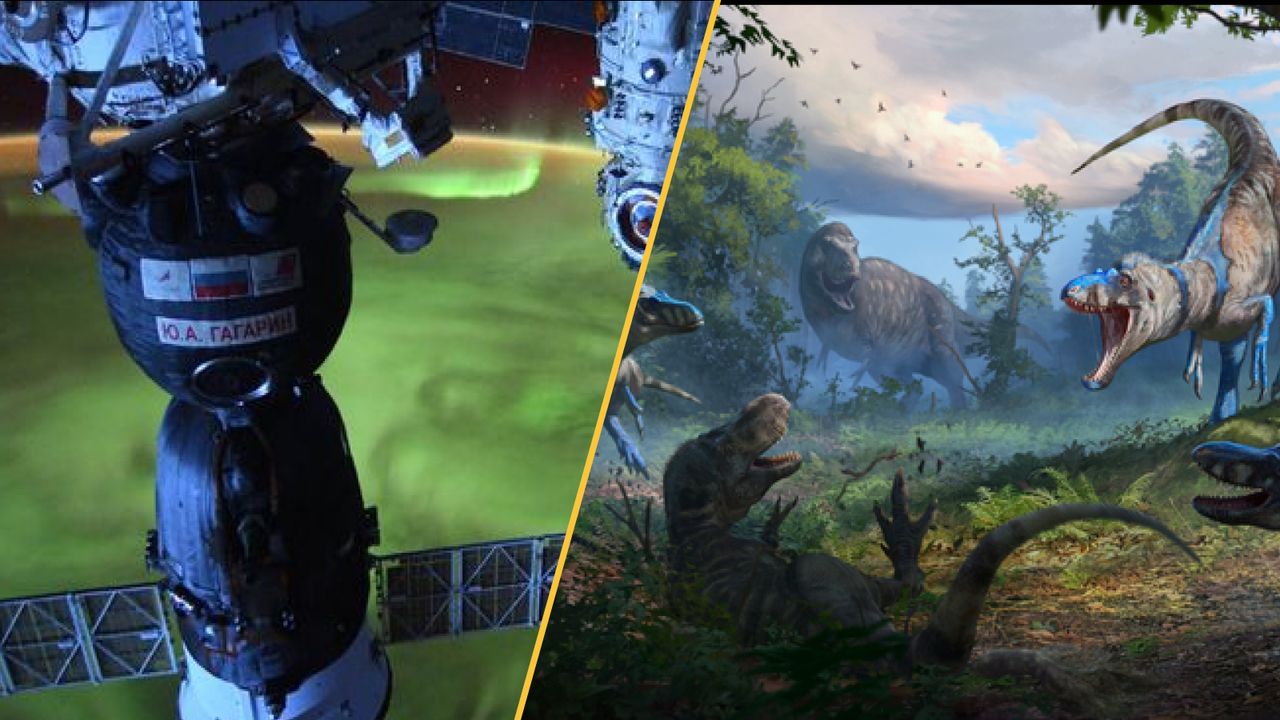Science
New Discoveries Illuminate Solar Science and Dinosaur Evolution

Recent scientific advancements have captured global attention, highlighting crucial findings related to our sun, interstellar comets, and the evolution of dinosaurs. This week’s revelations underscore the dynamic nature of our universe and the ongoing exploration of Earth’s prehistoric past.
Insights into Solar Dynamics and Cometary Activity
A groundbreaking study has provided insights into why the sun’s outer surface, known as the corona, is significantly hotter than its core. Researchers have detected magnetic waves that transport energy from the sun’s interior to its outer layers. This phenomenon, theorized since the 1940s, reveals the complexities of solar magnetic fields, which can twist and break, leading to powerful solar flares and geomagnetic storms that threaten satellites on Earth.
In related news, the interstellar Comet 3I/ATLAS has reached its perihelion, the closest point to the sun. This event has triggered a rapid increase in brightness and gas release, as observed by NASA spacecraft. The James Webb Space Telescope has identified changes in the comet’s chemistry, attributed to billions of years of exposure to space radiation. Two spacecraft are expected to navigate through the comet’s tail, offering further opportunities for observation.
Debate Over Dinosaur Classification Resolved
In a significant development for paleontology, a study of the “Dueling Dinosaurs” fossil has clarified the status of the small tyrannosaur previously thought to be a juvenile Tyrannosaurus rex. The analysis suggests that this dinosaur, named Nanotyrannus lancensis, is indeed a distinct species, challenging long-held assumptions. The fossils, discovered in 2006, depict a fierce encounter between a Triceratops and the tyrannosaur, providing a unique glimpse into prehistoric life.
The debate surrounding Nanotyrannus has persisted for nearly four decades, but recent findings have led many paleontologists to accept its classification as a separate species. Additionally, another research team has identified a new species within the genus, named Nanotyrannus lethaeus, potentially igniting further discussion within the scientific community.
Further discoveries in the animal kingdom reveal an ancient rhino from Canada’s High Arctic that challenges previous understandings of the North Atlantic Land Bridge. Meanwhile, lab monkeys in Mississippi have been reported as herpes-free, although concerns about their potential danger remain.
Cultural Curiosities and Technological Advances
A fascinating study has examined the relationship between user behavior and chatbot accuracy. Researchers discovered that being rude to chatbots like ChatGPT can marginally enhance their performance, showing a 4% improvement in accuracy. While this may seem like a convenient trick, scientists caution against such behavior, as it could negatively impact interpersonal interactions and foster undesirable traits.
In broader technological news, significant breakthroughs continue to emerge. Humanoid robots are now capable of lifting up to 4,000 times their own weight thanks to advanced artificial muscle technology. Meanwhile, a new analog chip developed in China promises to be 1,000 times faster than top-tier Nvidia GPUs, potentially revolutionizing computing.
Concerns Surrounding mRNA Research Funding
The future of mRNA research faces uncertainty as the United States government appears to be withdrawing support for this promising field. Following the successful deployment of mRNA vaccines during the COVID-19 pandemic, recent funding freezes and project cancellations have raised alarms among scientists. They warn that this retreat could hinder advancements in treatments for cancer, genetic disorders, and immune deficiencies.
This week’s discoveries and discussions highlight the vibrant and often contentious nature of scientific inquiry. As research continues, the intersection of technology, paleontology, and astrophysics remains a captivating arena for exploration and discovery.
-

 Science2 weeks ago
Science2 weeks agoIROS 2025 to Showcase Cutting-Edge Robotics Innovations in China
-

 Politics2 weeks ago
Politics2 weeks agoJudge Considers Dismissal of Chelsea Housing Case Citing AI Flaws
-

 World3 weeks ago
World3 weeks agoBravo Company Veterans Honored with Bronze Medals After 56 Years
-

 Lifestyle2 weeks ago
Lifestyle2 weeks agoStone Island’s Logo Worn by Extremists Sparks Brand Dilemma
-

 Health2 weeks ago
Health2 weeks agoStartup Liberate Bio Secures $31 Million for Next-Gen Therapies
-

 Top Stories2 weeks ago
Top Stories2 weeks agoIndonesia Suspends 27,000 Bank Accounts in Online Gambling Crackdown
-

 Health3 weeks ago
Health3 weeks agoTop Hyaluronic Acid Serums for Radiant Skin in 2025
-

 Sports3 weeks ago
Sports3 weeks agoMel Kiper Jr. Reveals Top 25 Prospects for 2026 NFL Draft
-

 World2 weeks ago
World2 weeks agoHoneywell Predicts Record Demand for Business Jets Over Next Decade
-

 Lifestyle3 weeks ago
Lifestyle3 weeks agoMary Morgan Jackson Crowned Little Miss National Peanut Festival 2025
-

 Sports2 weeks ago
Sports2 weeks agoYamamoto’s Mastery Leads Dodgers to 5-1 Victory in NLCS Game 2
-

 Science3 weeks ago
Science3 weeks agoArizona State University Transforms Programming Education Approach









